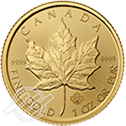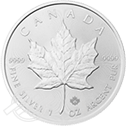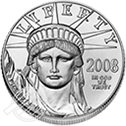What Could Negative Rates Mean for U.S. Savers?
The ability to save money is perhaps the greatest and most critical component of financial independence. In fact, the famous W. Clement Stone once stated: “If you cannot save money, then the seeds of greatness are not in you.”
Many hardworking Americans have saved diligently for years and years, building their nest eggs in the hopes that one day they may retire and live out their days on interest and income generated from portfolio returns.
Considering the fact that savings and interest are so important to working Americans and retirees, one has to wonder how a negative interest rate policy could potentially impact savers.
And the notion of negative rates is by no means far-fetched…
Following the financial crisis of 2008, the Federal Reserve not only dropped interest rates to zero, but also flooded the economy with massive sums of money in the form of quantitative easing. In doing so, American savers saw their savings returns drop to almost nothing. The zero interest rate policy was especially hard on retirees, many of whom depend on interest income to pay bills and live day to day.
While seeing your interest income drop to almost nothing, imagine for a moment if you not only received zero interest income but now actually had to pay a bank to hold your money…
You may be thinking, “That sounds crazy…”
Some central banks, however, such as Japan and the ECB, have already implemented negative interest rate policies.
It is important to understand, however, that current negative interest rate policies are being used on a bank-to-bank basis. Individual investors do not currently have to pay the bank to hold their money.
As central banks get deeper into negative interest rate territory, some might argue that the possibility of savers being penalized could potentially increase.
Could such a policy be seen in the U.S.?
We think so…
The Fed could, in fact, implement a negative interest rate policy and this is one of the tools in their toolbox.
While such a policy may be viewed as extremely unlikely at the current juncture, it is something to consider.
If such a policy were to be seen in the U.S., it could potentially frighten investors. If it ever came down to investors paying a negative interest rate for banks to hold their cash, the potential for a run on savings accounts may exist.
Needless to say, investors looking to pull capital from savings accounts could potentially be catastrophic and could cause more harm than good.
While we don’t necessarily see a scenario like this as a strong possibility, the mere possibility just goes to show how important it is to have allocations in alternative asset classes.
Tangible, hard assets may be the best choice. Assets like physical gold, silver, and other precious metals.
These key precious metals have been considered a reliable store of wealth and value for centuries. Unlike a savings account and many other asset classes, their value is derived from supply and demand and is not directly influenced by central bank monetary policy.
If you don’t currently own any physical precious metals, now may be the time to consider an allocation.
Building a holding of physical gold or silver has never been easier than it is today. In fact, you can even use your IRA account to start accumulating and holding these hard assets. These assets may potentially provide price appreciation and a possible hedge against a number of issues including inflation, declining currency values, and even deflation.
Given the current environment of slow global growth, negative interest rates, and geopolitical uncertainties, we feel an allocation in these hard assets is a must.
Do yourself a favor and look into adding hard assets today. Our experienced precious metals account executives can walk you through the process from start to finish and show you just how easy it is to begin diversifying with precious metals. Don’t wait for negative interest rates, another stock market crash, or further declines in the dollar. Explore your options now. Call us today at 1-800-341-8584.
Tags: buy gold, buy silver, central bank policies, diversify your portfolio, hard assets, invest in gold, invest in silver, negative interest rates, protect yourself, savings account loss, stock market crash, us dollar decline


